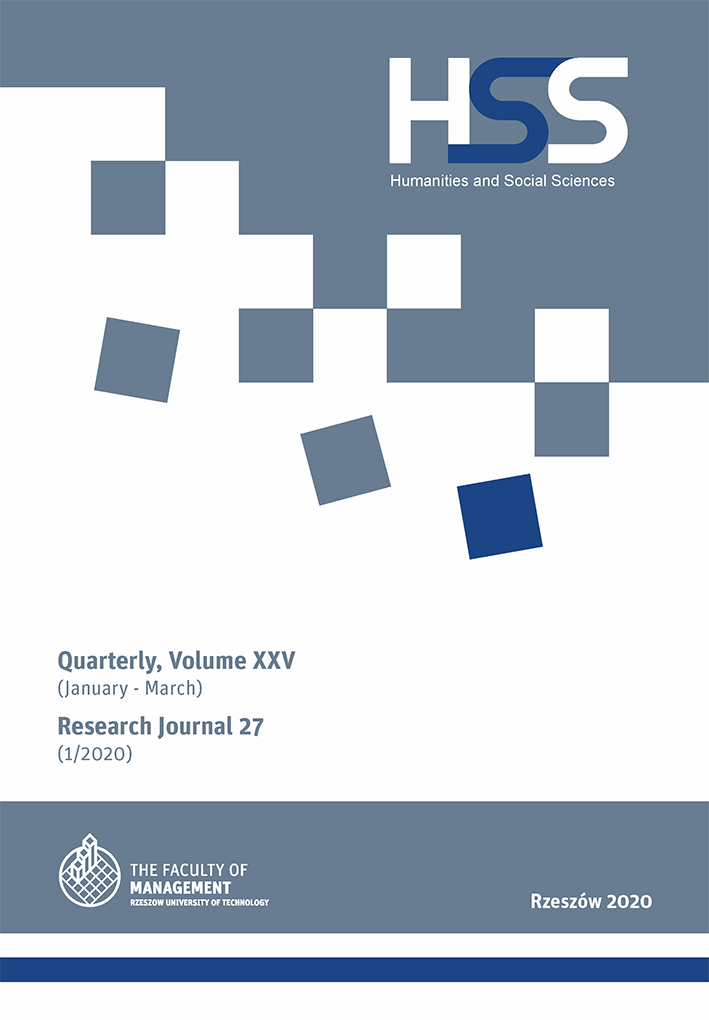Abstrakt
The organization's operation in a virtual environment is based on a specific form of communication – social dialogue. The purpose of the article is to describe the phenomenon of social dialogue and its elements: (1) the sender/producer, (2) recipient/customer, and (3) hypertextuality of the environment in which the process takes place. The adopted research method is a qualitative analysis supported by the technique of real-defining definition. Results of this work imply that text in the new media is not only thought of as a creator of meanings, but to extend this understanding to all cultural creations. This means that the fundamental change concerns the perception of the text as a dynamic mechanism of producing meanings, and not the static reception of the record as before. These implications is particularly important for the study of cultural products such as behavioral patterns, for example. Thus, understanding the mechanisms of technical functioning and the human factor in this world can give real profits. Lack of humility towards this medium and disproportionate losses as to the cost of their own ignorance.
Bibliografia
Biocca, F. (1992). Communication Wtithin Vitrual Reality: Creating a Space for Researche. “Journal od Communication” No. 42/4.
Fras, J. (2001). Dialog we współczesnym komunikowaniu publicznym [w:] Borkowski, I., Woźny, A., red., Nowe media. Nowe w mediach. Wrocław: Oficyna Wydawnicza Arboretum, s. 110.
Godzic, W. (1996). Oglądanie i inne przyjemności kultury popularnej. Kraków: Universitas.
Gwóźdź, A. (1992). Kultura – komunikacja – film. O tekście filmowym. Kraków: Wydawnictwo Literackie.
Habermas, J. (1988). Teoria komunikowania. Boston: Beacon Press.
Hiem, M. (1993). Metaphysics of Virtual Reality. Oxford–New York: Oxford University Press.
Kluszczyński, R.W. (1966). Interaktywność – właściwość odbioru czy nowa jakość sztuki/kultury [w:] Seidler-Janiszewska, A., red., Estetyczne przestrzenie współczesności. Warszawa: Instytut Kultury.
Kłeczek, J. (2015). Nielinearność narracji teatralnych a hipertekstualność obiektów nowych mediów [w:] Oleszek, B., Wiśniewska, M., red., Współczesny teatr i film wobec wyzwań nowych mediów. Toruń: Wydawnictwo UMK.
Krueger, M. (1991). Artificial Reality, Reading. Addison–Wesley: Mass.
Lalewicz, J. (1985). Socjologia komunikacji literackiej. Wrocław: Ossolineum.
Linday, P.H., Norman, D.A. (1984). Kowaliszyn A., tłum., Procesy przetwarzania informacji u człowieka. Warszawa: PWN.
Mochol, A.R. (2019). Szkice Hipertekstualne. Access on the internet: http://www.mochola.org/hypertext.
Pisarski, M. Access on the internet: http://pl.wikipedia.org/wiki/Hipertekst.
Reid, E. (1994). Cultural Formations in Text – Based Virtual Realities. Melbourne: Universtiy of Melbourne.
Sitarski, P. (2002). Rozmowa z cyfrowym cieniem. Model komunikacyjny rzeczywistości wirtualnej. Kraków: RABID.
Sławiński, J. (1988). Intertekstualność [w:] Głowiński, M. i in., red., Słownik terminów literackich. Wrocław: Wydawnictwo „Open”.
Tucker, R.N., red. (1989). Interactive Media. The Human Issues. London: Kogan Page.
Żmigrodzki, P. (2001). O intertekstualności dyskursu politycznego w mediach (na przykładzie rozmów z politykami) [w:] Borkowski, I. Woźny, A., red., Nowe media. Nowe w mediach. Wrocław: Oficyna Wydawnicza Arboretum.


